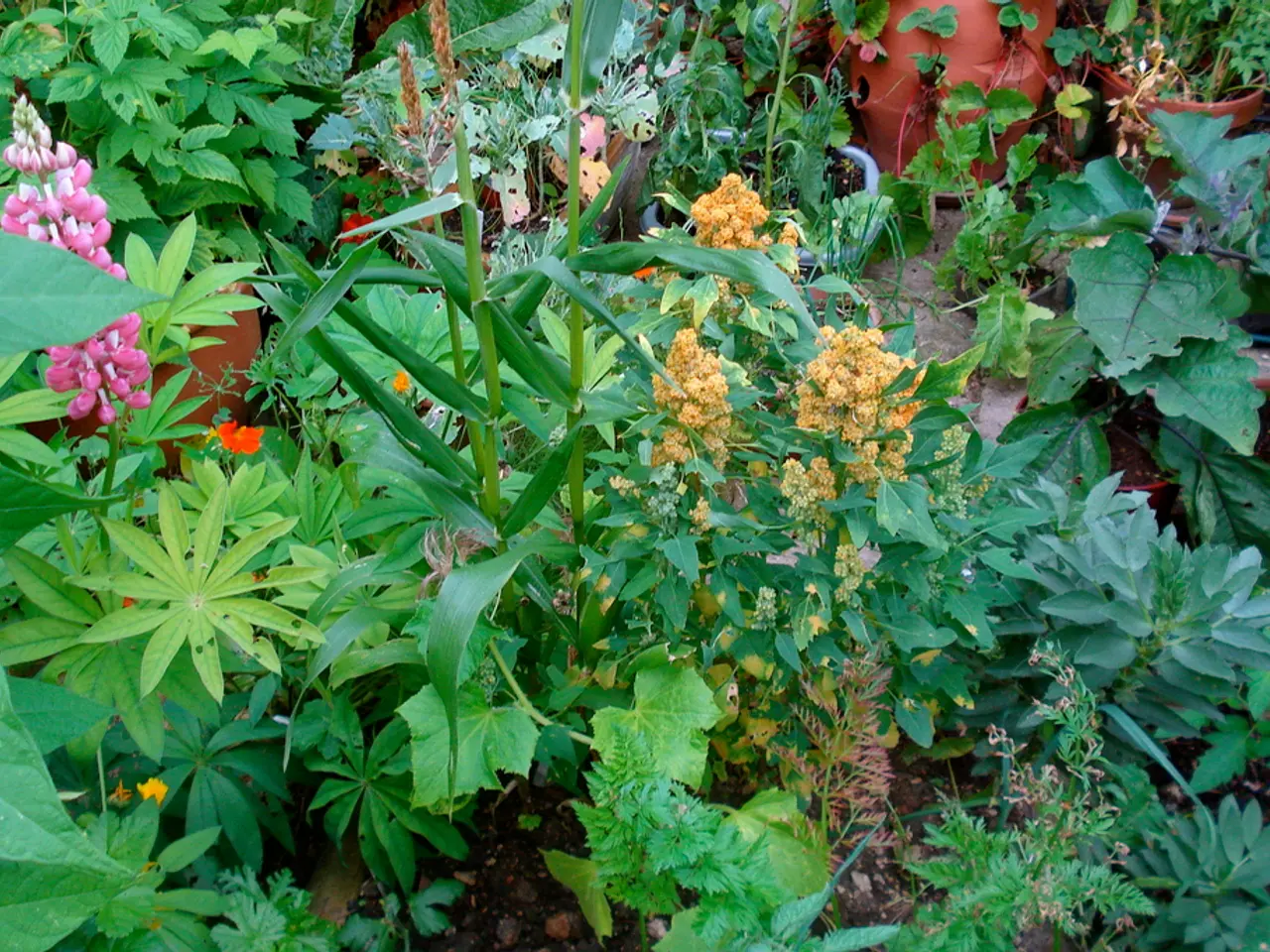Developing a Multi-Sensory Garden: A Delight for Sight, Sound, Taste, Touch, and Smell
A sensory garden is an innovative and inclusive outdoor space designed to engage all five senses - sight, sound, taste, touch, and smell - and cater to various age groups. By incorporating a mix of colorful, fragrant, textured, edible, and sound-producing plants, along with accessible paths and interactive features, you can create a captivating environment that encourages sensory exploration and connection with nature.
### Sensory Garden Plants to Engage Multiple Senses
To create a visually appealing sensory garden, consider plants with diverse colors, textures, and movements. Muhly grass, with its airy pink plumes, cranberry hibiscus for deep burgundy leaves, and dombeya (tropical hydrangea) with pale pink blooms that attract pollinators are great choices.
For aromatic plants, bold options like popcorn cassia (smelling like buttered popcorn) or more classic scents such as wild rose basil, plumeria, or evening primrose can be included. Aromatic herbs like peppermint, chamomile, lemon verbena, rosemary, thyme, and sage also stimulate the sense of smell.
To enhance the tactile experience, plants with interesting textures like Pilea ‘Moon Valley’ with quilted leaves and Tibouchina, whose soft fuzzy foliage invites touching, can be added. Lamb’s ear, with its velvety silver leaves, is another tactile favorite.
Incorporate plants that rustle or add auditory elements like a small stand of bamboo or palm fronds that move in the wind. Adding wind chimes enhances the soundscape with a calming, variable auditory experience.
Edible plants like cranberry hibiscus, herbs, fruit trees, native berry bushes, and other flavorful treats can provide a safe, sensory flavor experience for guests who wish to taste.
### Design Principles for an Accessible, Multi-Sensory Garden
To make the sensory garden user-friendly, design plant heights and garden features accessible for all ages and abilities. For children, keep plants within reach, and for wheelchair users, maintain appropriate plant height and garden path accessibility.
Plan space to accommodate mature plant sizes and allow for movement. Use a combination of sun and shade areas to accommodate diverse plant needs and visitor comfort.
Incorporate paths, benches, water features, bird feeders, and garden art to add sensory interest beyond plants. These features encourage interaction and provide resting spots, making the garden inclusive and enjoyable for longer visits.
Include plants that attract butterflies, bees, birds, and other pollinators to add dynamic sensory layers through movement, sound, and natural interactions.
To extend accessibility and enjoyment into evening hours, include night-blooming plants like moonflower, Mexican tuberose, and evening primrose that offer nighttime visual and olfactory experiences.
Use colors, textures, and proportions that appeal to children and adults alike, ensuring that the built environment and planting encourage sensory engagement at an intuitive level.
In conclusion, a well-designed sensory garden can offer enormous benefits, providing education, stimulation, curiosity, nostalgia, ease of access, and calmness for people of all walks of life, ages, and abilities. By carefully selecting plants and designing the garden layout, you can create a space that appeals to all five senses, fostering a deeper connection with nature and promoting mental wellbeing.
- For a home-and-garden that offers an enriching lifestyle through sensory engagement, consider including muhly grass, cranberry hibiscus, and dombeya (tropical hydrangea) in your sensory garden, as well as aromatic plants like popcorn cassia, wild rose basil, and plumeria.
- To ensure a multi-sensory home-and-garden space that is user-friendly and inclusive, adopt design principles such as maintaining appropriate plant height, garden path accessibility, and incorporating tactile plants like Pilea ‘Moon Valley’, Tibouchina, and lamb’s ear, along with auditory elements like bamboo or wind chimes, and edible plants that provide safe, sensory flavor experiences.






